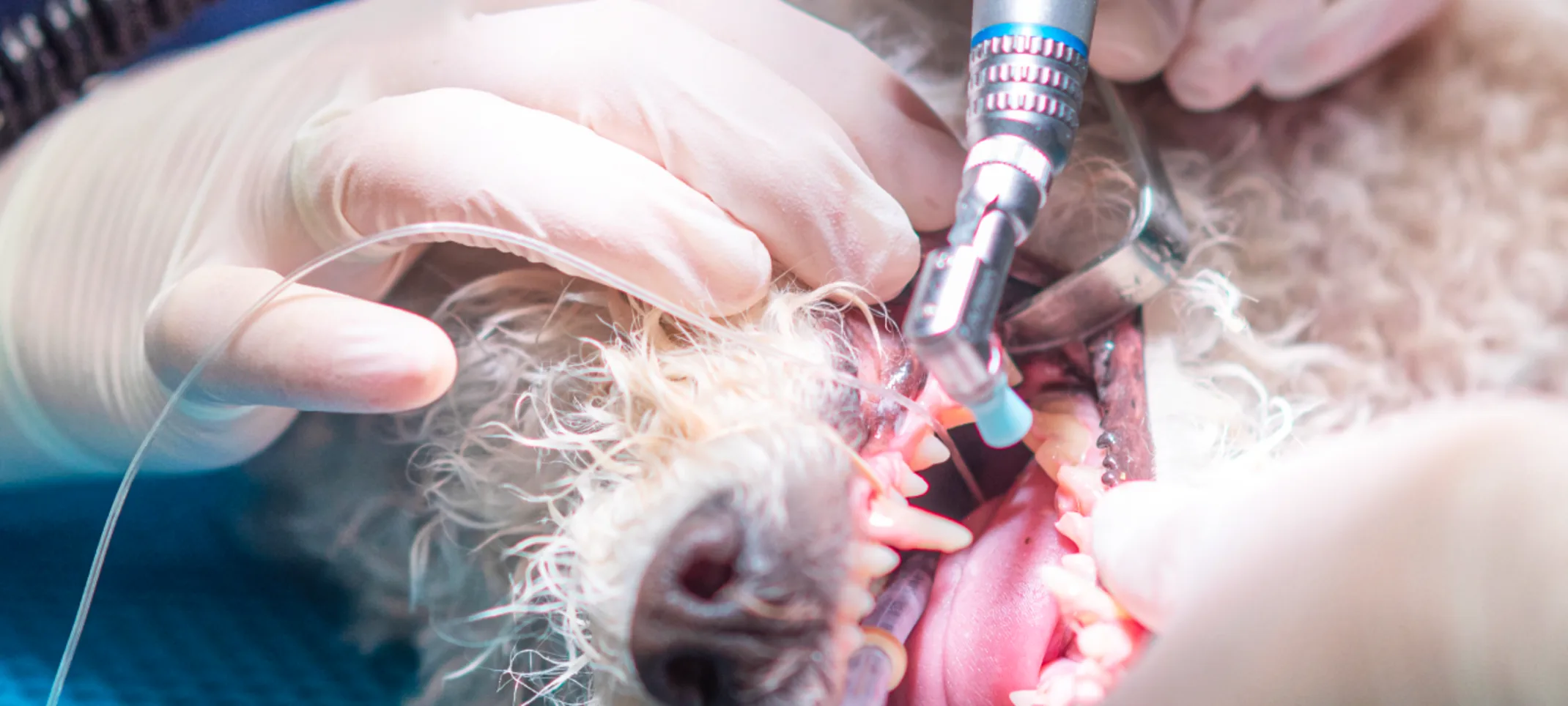I-20 Animal Medical Center
Oronasal Fistula Repairs

Diagnosing and Treating Pet Oronasal Fistulas
Oronasal fistulas occur when there is a hole or other communication between the oral cavity (mouth) and the sinuses. This fistula or hole then allows mucus from the sinuses to drain into the mouth. It also allows liquids (saliva, water) from the mouth to go up into the sinuses, which is often seen as drainage from a pet’s nose.
Pet patients with oronasal fistulas may present with a variety of symptoms. The owner may notice sporadic or chronic sneezing. There may be nasal discharge from one or both nostrils. Sometimes patients will present with no clinical signs, indicating the importance of thorough examinations and periodic teeth cleanings with the veterinary dentists at I-20 Animal Medical Center.
Fistulas can occur in dogs and cats, and they should be treated because appropriate treatment can dramatically improve the quality of the pet patient’s life.
Causes of Oronasal Fistulas in Pets
Pets with oronasal fistulas may present with a variety of symptoms. The owner may notice sporadic or chronic sneezing. There may be a nasal discharge from one or both nostrils. Sometimes patients will present with no clinical signs indicating the importance of thorough examinations and periodic teeth cleanings.
Causes of Oronasal Fistulas in Pets
The most common cause of oronasal fistulas is advanced periodontal disease that has led to bone loss around the pet’s tooth, resulting in fistula development. Other causes of oronasal fistulas include complications from past extractions, foreign body penetration, bite wounds and neoplasia. They can also be caused by developmental clefts of the lip or palate.
Because periodontal disease in pets is the most common cause for oronasal fistulas, regular exams and teeth cleanings at I-20 Animal Medical Center can prevent them. Dachshunds are frequently affected, and in these cases, bone loss is often present adjacent to the upper canine teeth.
Treating Oronasal Fistulas in Pets
Treating oronasal fistulas requires extracting the tooth where the fistula is located. But merely extracting the pet’s tooth will not lead to closure and healing; instead, a hole will remain between the mouth and the sinuses if additional surgery is not performed to close the fistula.
After the tooth is extracted, the veterinary dental surgeon creates a mucogingival (tissue) flap so the defect can be covered and the fistula can heal.
Schedule pet dental care at I-20 Animal Medical Center by calling 817.478.9238.
